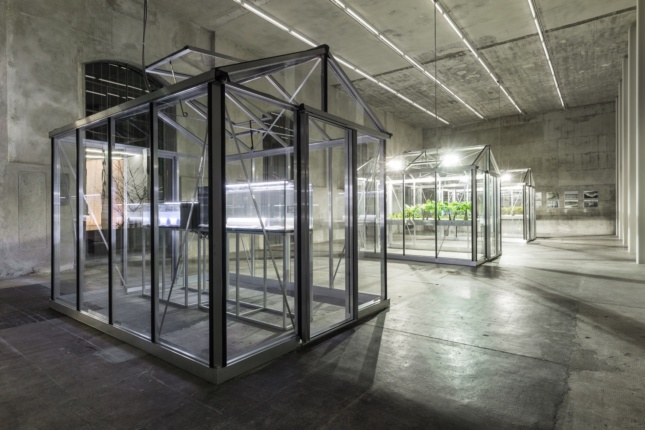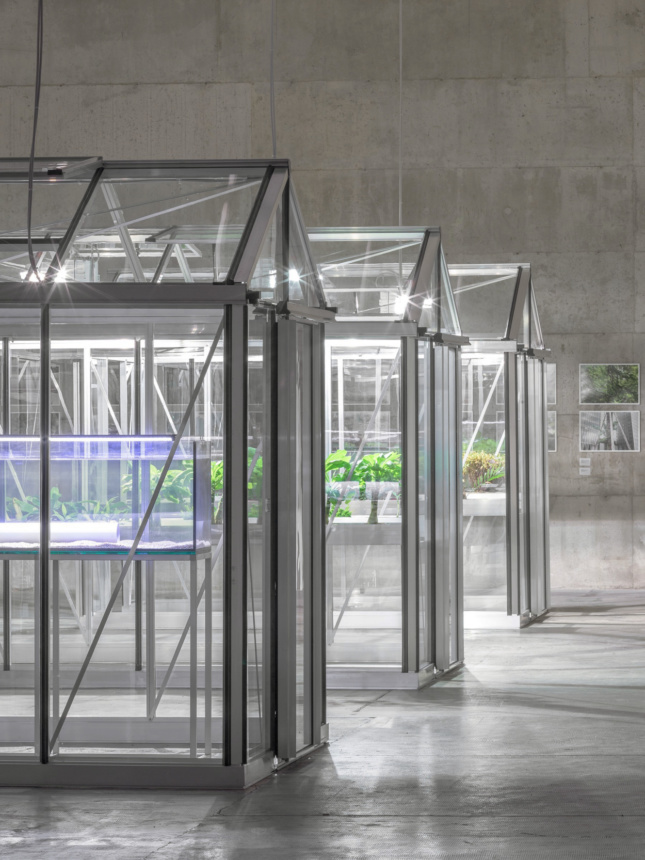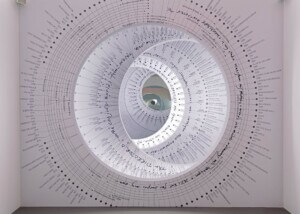In 1964, Julio Cortázar published his famous short story Axolotl, the tale of a man living in Paris fascinated by an aquatic creature that he observes in the aquarium of the Jardin des Plantes. The axolotl, a slow-moving amphibian that spends its entire life in a larval stage, and seems almost like a plant or a mineral, looks like it came from the prehistoric ages. The story’s protagonist starts to understand the different spaces and temporalities embedded in the axolotl: Both the man and the axolotl seem to share the same universe, but, in fact, their bodies encompass different notions of their surroundings, tearing them apart. They don’t share the same universe because the way they can relate to their environments and their temporalities are unreconcilable. Yet they coexist. They are part of a multiverse.

In 2017, the artist and architect Michael Wang gave the axolotl a main role for his project Extinct in the Wild at Fondazione Prada in Milan. Wang showed the mutual dependency of these multiverses shared by different species and the ideologies behind them. The axolotl is now an endangered species that has vanished from its natural habitat and lives almost exclusively under artificial conditions in zoos and aquariums, in scientific facilities for research, and in homes as exotic pets. Humans are responsible for their disappearance in the wild, but they also owe their continued existence to human care. This relationship attests to the complex understanding of how the Anthropocene has affected a multispecies shared environment and the need to comprehend its challenges. It is not enough to build an immediate response to the climate crisis that comes from human beings or to come back to an “original” state of harmony, but a structural change that surpasses an anthropocentric view—with human beings and their standard of living as the center. It is necessary to build a notion of the world that takes into account the agency of other species.
The conception of a multiverse and the mutual dependency of species has been the center of Wang’s work for the last few years, presented at The World Around in January of this year. In Extinct in New York (organized by Swiss Institute, where the installation permanently resides, and on view at LMCC’s Arts Center at Governor Island in 2019) he introduced a series of plants that had been eradicated from New York City’s landscape. This ecological catastrophe was the result of centuries of hunting, harvesting, and building craziness.
As Wang pointed out: “When the Croton Aqueduct opened in 1842, the outflux of wastewater suffocated the seaweeds of New York Harbor. The air changed. Coal smoke poisoned the lichens that had hung from hemlocks; a century later these trees too nearly vanished, plagued by an insect introduced with ornamental plants. Forests of steel rose in their stead, as human habitation stretched skyward.” But Wang doesn’t understand the ecosystem in a dialectic way, based on the binarism of human/non-human confrontations; rather he highlights the new environments created by this relationship. Subways that maintain optimal temperatures for rats; pigeons that found in the skyscrapers a shelter not far from their ancestors’ nests on Mediterranean cliffs; heated living rooms that welcome new flora, etc. The territory, and their inhabitants, are both techno-social recompositions.

This project is not about restoration, nor about the idea of a harmonic past. Wang rather conceives it as a life-support system that doesn’t try to reinstate the previous ecosystem where species like Zostera marina (native of the marine meadows in New York Bay) or the Helonias bullata (last collected in Jamaica Bay in 1883) have disappeared from their original habitat. This was also the basis for another project, The Drowned World, that Wang presented at Manifesta Palermo in 2018 (also shown at The World Around). In it, an artificial forest assembled from plants closely related to those of the Carboniferous period grows from the industrial ruins of a gasworks. These plants once formed swamplands that stretched across the globe. Over millennia, their buried remains hardened into the very coal used at the gasworks. As this coal was heated and burned, carbon captured from the air 300 million years ago was again released, and an ancient atmosphere was in part restored.
In Wang’s projects, all the violence, the displacements, the uneven balance of powers, and the colonization of the territory are confronted. The world is designed by one species and for one species. But human beings are not self-contained. Their bodies are also part of other species, from the varied microorganisms that inhabit them to the ever-changing habitats they share with other non-human agents. The challenge now is to understand the mutual dependency between species in a multiverse.











